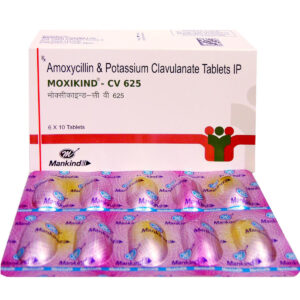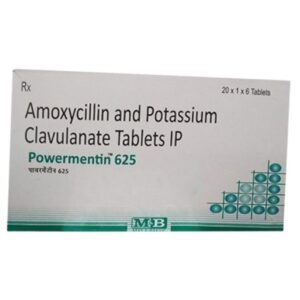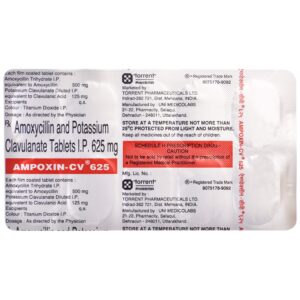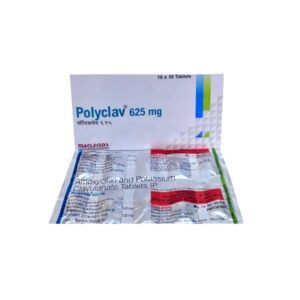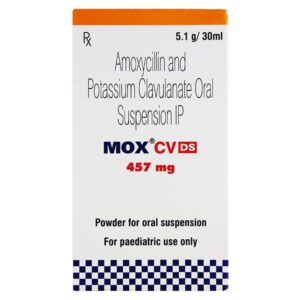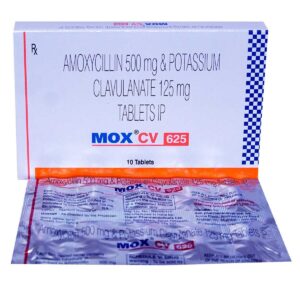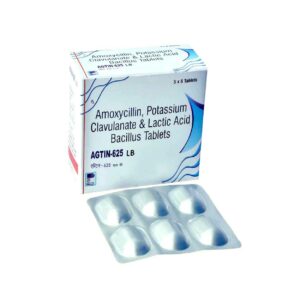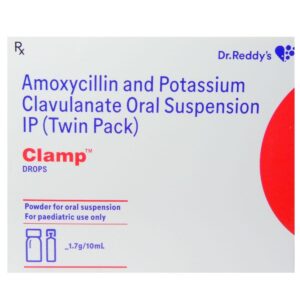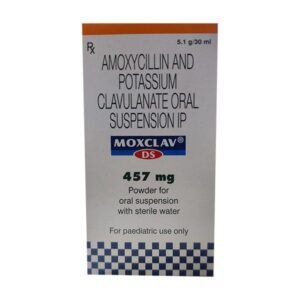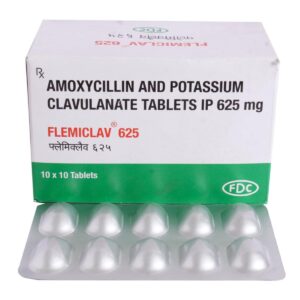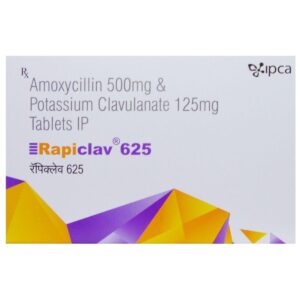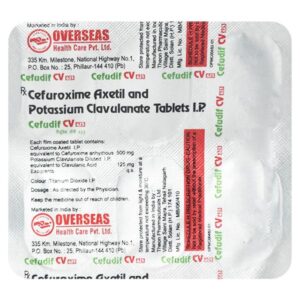AMOXYCILLIN + CLAVULANIC ACID
Amoxycillin: Amoxicillin is a widely used prescription antibiotic drug. It belongs to the class of antibiotics called penicillins. It is commonly used to treat a variety of bacterial infections, including respiratory tract infections (such as pneumonia and bronchitis), urinary tract infections, skin infections, and ear infections.
The mechanism of action of amoxicillin involves interfering with the formation of the bacterial cell wall, leading to the weakening and lysis of the bacteria. This drug specifically targets and inhibits the transpeptidase enzyme, which is crucial for the cross-linking of peptidoglycan chains in the bacterial cell wall. By inhibiting this process, amoxicillin weakens the bacterial cell wall and promotes bacterial cell death.
The dosage of amoxicillin can vary depending on the age, weight, and severity of infection in an individual. It is typically taken orally as a tablet or suspension. The usual recommended adult dose for most infections is 250mg to 500mg taken every 8 hours, or 500mg to 875mg taken every 12 hours. The treatment duration can also vary, usually ranging from 7 to 14 days, depending on the type and severity of the infection. It is important to follow the prescribed dosage and complete the full course of treatment as directed by a healthcare professional.
As with any medication, amoxicillin can have side effects. Common side effects include nausea, vomiting, diarrhea, stomach pain, and skin rash. These side effects are generally mild and go away on their own. In some cases, allergic reactions can occur, which may manifest as hives, itching, swelling, or difficulty breathing. It is important to seek medical attention immediately if any signs of an allergic reaction are noticed. Additionally, amoxicillin can sometimes cause more serious side effects, such as severe diarrhea, liver problems, or allergic reactions that affect multiple organ systems. These adverse reactions are rare but should be reported to a healthcare professional immediately. It is important to inform a doctor about any pre-existing medical conditions or other medications being taken to ensure the safe and effective use of amoxicillin.
Clavulanic Acid: Clavulanic Acid is a drug that belongs to the class of antibiotic medications known as beta-lactamase inhibitors. It is most commonly used in combination with certain penicillin antibiotics to enhance their effectiveness against bacteria that are resistant to standard penicillin therapy. This combination is often referred to as amoxicillin/clavulanic acid or augmentin.
The mechanism of action of clavulanic acid is to inhibit the activity of beta-lactamases, which are enzymes produced by bacteria that can inactivate antibiotics such as amoxicillin. By inhibiting these enzymes, clavulanic acid allows amoxicillin to effectively kill the bacteria.
The dose of clavulanic acid may vary depending on the specific formulation and the condition being treated. It is usually available in fixed combinations with amoxicillin in tablet, capsule, or liquid form. The dosage is typically prescribed by a healthcare professional and should be taken exactly as directed.
As with any medication, there can be potential side effects associated with clavulanic acid. The most common side effects include diarrhea, nausea, vomiting, abdominal pain, and skin rash. These side effects are generally mild and do not require medical attention. However, if any severe or persistent side effects occur, it is important to consult a healthcare professional.
In rare cases, clavulanic acid can cause more serious side effects such as liver damage or allergic reactions. Signs of liver damage may include yellowing of the eyes or skin, dark urine, or persistent nausea/vomiting. Allergic reactions may present as rash, itching, swelling, or difficulty breathing.
It is important to inform your healthcare provider about any other medications or supplements you are taking before starting clavulanic acid. Certain medications may interact with clavulanic acid, potentially affecting its effectiveness or increasing the risk of side effects.
In conclusion, clavulanic acid is a beta-lactamase inhibitor used in combination with certain penicillin antibiotics to overcome bacterial resistance. It works by inhibiting the enzymes that can inactivate antibiotics. The dose and specific formulation of clavulanic acid will be determined by a healthcare professional. While generally well-tolerated, it can cause side effects such as diarrhea, nausea, and rash. Serious side effects and allergic reactions are rare but should be promptly reported to a healthcare professional.

